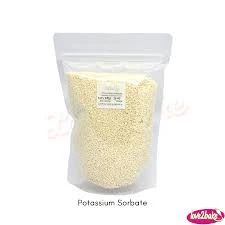
emulsifier 433
Understanding Emulsifier E433 A Comprehensive Overview
Emulsifiers play a crucial role in the food industry by ensuring the stability and texture of various products. One such widely used emulsifier is E433, also known as Polysorbate 80. This article aims to provide a detailed look at E433, its functions, applications, and safety considerations.
What is E433?
E433, or Polysorbate 80, is a non-ionic surfactant derived from sorbitol and fatty acids, particularly oleic acid. It is a versatile compound capable of stabilizing emulsions—mixtures of oil and water that typically do not blend well. This emulsifier is soluble in both water and oil, making it ideal for use in a variety of food products. It is often listed on ingredient labels as Polysorbate 80 or simply E433.
Functions of E433
The primary function of E433 is to act as an emulsifier, which helps maintain a uniform distribution of ingredients in food products. By reducing the surface tension between oil and water, E433 allows these two immiscible liquids to blend more effectively. This is particularly important in products that require a smooth texture, such as salad dressings, mayonnaise, ice creams, and sauces.
In addition to emulsification, E433 also serves as a stabilizer and thickening agent. It can help improve the texture of various food items, preventing the separation of ingredients over time. Furthermore, E433 can enhance the flavor release in food products, allowing for a more pronounced taste experience.
Applications of E433
E433 is found in a wide range of food products, including
emulsifier 433

1. Dairy Products It is commonly used in ice creams, yogurts, and whipped toppings to provide creaminess without the greasy texture. 2. Baked Goods In cakes and cookies, E433 helps improve the overall texture and extend shelf life by preventing staling.
3. Condiments and Sauces Salad dressings and sauces often contain E433 for improved mixing and a smooth mouthfeel.
4. Snacks It can be found in some snack foods, where it aids in the emulsification of flavorings and oils.
5. Pharmaceuticals and Cosmetics Beyond food, E433 is also used in various non-food products, including pharmaceuticals and cosmetics, acting as a stabilizer in creams and ointments.
Safety and Regulatory Status
E433 is generally recognized as safe (GRAS) by various food safety authorities, including the U.S. Food and Drug Administration (FDA) and the European Food Safety Authority (EFSA). It has a long history of use in food products, and extensive research supports its safety when consumed in moderation.
However, as with any additive, individual sensitivities can occur. Some people may experience allergic reactions or gastrointestinal issues, although these cases are rare. It's always advisable to read product labels, especially for individuals with specific allergies or intolerances.
Conclusion
Emulsifier E433, or Polysorbate 80, plays a vital role in the food industry, contributing to the stability, texture, and overall quality of numerous food products. Its ability to effectively blend oil and water makes it an indispensable ingredient in many applications, from sauces to dairy products and beyond. While it is considered safe for consumption, awareness of personal sensitivities is essential. As the food industry continues to evolve, the role of emulsifiers like E433 will remain critical in delivering high-quality, appealing products to consumers around the world.
-
Aluminum Hydroxide: Quality Gels & Dried Gel AntacidNewsAug.31,2025
-
Buy High-Quality Trichloroisocyanuric Acid for Sale | TCCA 90% SupplierNewsAug.30,2025
-
Pure Sodium Dichloroisocyanurate Dihydrate | Powerful DisinfectantNewsAug.29,2025
-
Industrial Chemicals: Quality & Purity for Every IndustryNewsAug.28,2025
-
Nitrile Rubber Honoring Strict Production StandardsNewsAug.22,2025
-
Aspartame Ingredients Honoring Food Safety ValuesNewsAug.22,2025
-
Fertilizer for Balanced Plant NutritionNewsAug.22,2025
Hebei Tenger Chemical Technology Co., Ltd. focuses on the chemical industry and is committed to the export service of chemical raw materials.
-

view more DiethanolisopropanolamineIn the ever-growing field of chemical solutions, diethanolisopropanolamine (DEIPA) stands out as a versatile and important compound. Due to its unique chemical structure and properties, DEIPA is of interest to various industries including construction, personal care, and agriculture. -

view more TriisopropanolamineTriisopropanolamine (TIPA) alkanol amine substance, is a kind of alcohol amine compound with amino and alcohol hydroxyl, and because of its molecules contains both amino and hydroxyl. -

view more Tetramethyl Thiuram DisulfideTetramethyl thiuram disulfide, also known as TMTD, is a white to light-yellow powder with a distinct sulfur-like odor. It is soluble in organic solvents such as benzene, acetone, and ethyl acetate, making it highly versatile for use in different formulations. TMTD is known for its excellent vulcanization acceleration properties, which makes it a key ingredient in the production of rubber products. Additionally, it acts as an effective fungicide and bactericide, making it valuable in agricultural applications. Its high purity and stability ensure consistent performance, making it a preferred choice for manufacturers across various industries.





